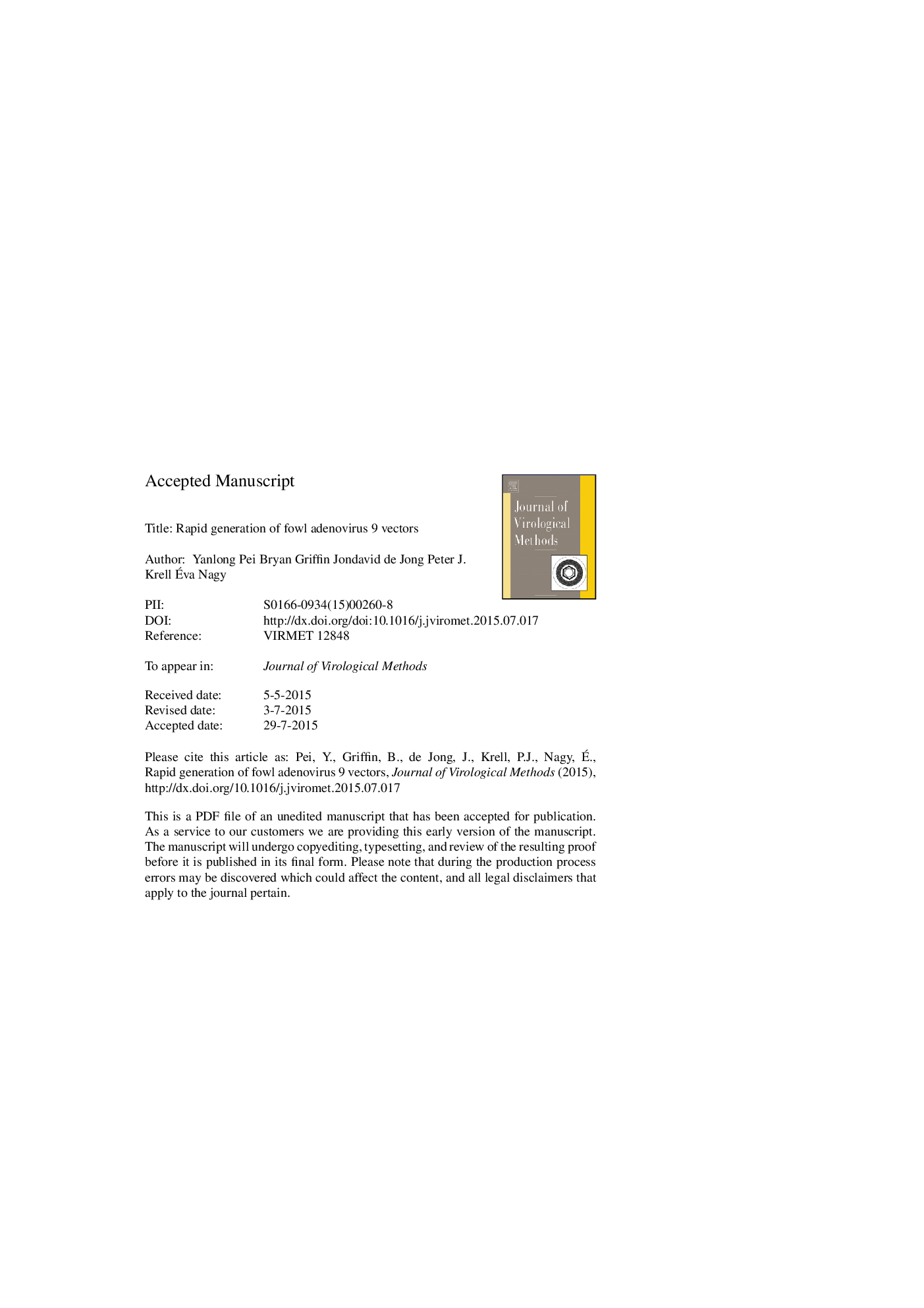| Article ID | Journal | Published Year | Pages | File Type |
|---|---|---|---|---|
| 6133115 | Journal of Virological Methods | 2015 | 30 Pages |
Abstract
Fowl adenoviruses (FAdV) have the largest genomes of any fully sequenced adenovirus genome, and are widely considered as excellent platforms for vaccine development and gene therapy. As such, there is a strong need for stream-lined protocols/strategies for the generation of recombinant adenovirus genomes. Current genome engineering strategies rely upon plasmid based homologous recombination in Escherichia coli BJ5183. This process is time-consuming, involves multiple cloning steps, and low efficiency recombination. This report describes a novel system for the more rapid generation of recombinant fowl adenovirus genomes using the lambda Red recombinase system in E. coli DH10B. In this strategy, PCR based amplicons with around 50 nt long homologous arms, a unique SwaI site and a chloramphenicol resistance gene fragment (CAT cassette), are introduced into the FAdV-9 genome in a highly efficient and site-specific manner. To demonstrate the efficacy of this system we generated FAdV-9 ORF2, and FAdV-9 ORF11 deleted, CAT marked and unmarked FAdV-9 infectious clones (FAdmids), and replaced either ORF2 or ORF11, with an EGFP expression cassette or replaced ORF2 with an EGFP coding sequence via the unique SwaI sites, in approximately one month. All recombinant FAdmids expressed EGFP and were fully infectious in CH-SAH cells.
Keywords
Related Topics
Life Sciences
Immunology and Microbiology
Virology
Authors
Yanlong Pei, Bryan Griffin, Jondavid de Jong, Peter J. Krell, Ãva Nagy,
